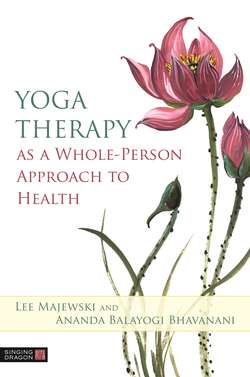Читать книгу Yoga Therapy as a Whole-Person Approach to Health - Lee Majewski - Страница 26
На сайте Литреса книга снята с продажи.
Role of yoga as a preventive measure
ОглавлениеWhile it is popular to look for the curative aspects of yoga, we must not forget that the major role of yoga is as a preventive therapy, preventing the painful suffering that is yet to manifest.4
If the practice of yoga is taken up during childhood, we can help so many conditions from occurring later on in life. This is primary prevention. Once the condition occurs, once the disease has set in, we have secondary prevention, which is more in the nature of controlling the condition, to whatever extent we can. Tertiary prevention is done once the condition has occurred, as we try to prevent complications, those that affect the quality of a client’s life.
Clinical applications of yoga have been studied in pediatric and young adult populations with a focus on physical fitness, cardiorespiratory effects, mental health, behavior and development, irritable bowel syndrome, eating disorders, and prenatal effects on birth outcomes. Yoga has been suggested as an option for children to increase their physical activity and fitness, and may be a gateway for adopting a healthy active lifestyle in sedentary children who are intimidated by more vigorous forms of exercise. A detailed review5 showed that yoga may benefit children with mental challenges by improving their mental ability, along with motor coordination and social skills, and that restoration of some degree of functional ability is possible in those with physical disabilities. A notable point mentioned by researchers was that, “Regardless of the goal, Yoga appears to be a multitasking modality that simultaneously treats both physical impairments as well as more global issues such as stress, anxiety, or hyperactivity.”6
To achieve this yogic integration at all levels of our being, it is essential that we take into consideration the all-encompassing multidimensional aspects of human existence that include the following: diet, natural environment, holistic lifestyle, internal attitudes and thought processes, recurring negative emotions, adequate bodywork through conscious and steady postures (asanas), conscious channeling of energy through gestures and neuromuscular locks (mudras, bandhas), breath–body movement integrating practices (kriyas), and breath work through pranayama.
However, the most important point is that some responsibility for health, wellbeing, and healing lies in the hands of each individual. We, as therapists, empower our clients and facilitate their efforts towards self-healing. The Purananuru7 says, “Life’s good comes not from others, nor its gifts, nor ills. Man’s suffering and its relief are both found within.”
